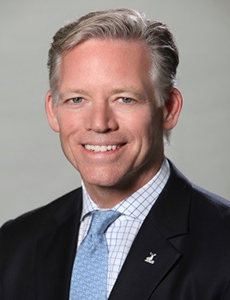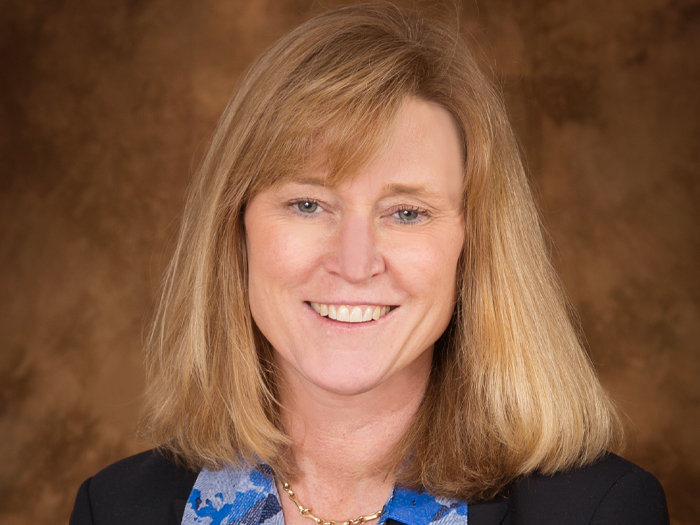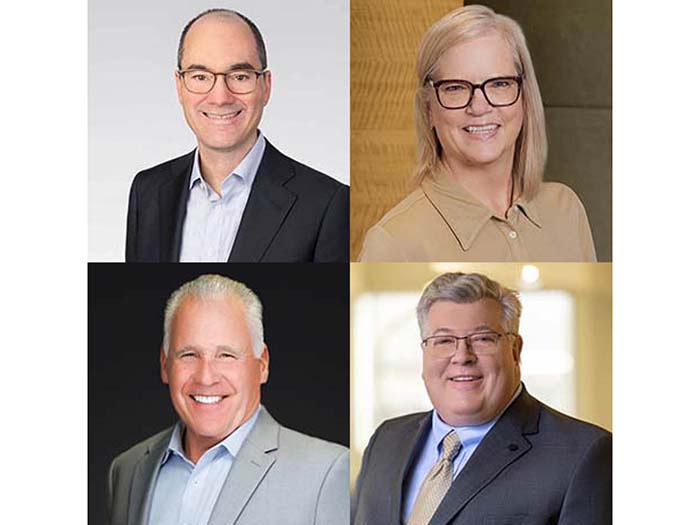Sponsored Content by The Hartford
How Captives and Program Solutions Can Benefit Insureds Amid Social Inflation and Rising Insurance Prices

As markets harden, insureds from every sector may be experiencing hefty premium increases across lines. In recent years, as the insurance industry has attempted to balance its books in the face of inflation and the aftermath of the COVID-19 pandemic, rate increases have become the norm, even for businesses with good loss histories.
Take the commercial auto and workers’ compensation lines, for example. Talent shortages in trucking have caused firms to bring in newer, less experienced drivers who might be more likely to get into an accident. Added to that, insurance companies are considering the impact of social inflation on jury verdicts should a claim end up going to trial.
Workers’ comp has struggled with similar talent shortages. As industries from construction to manufacturing fight to attract and retain workers, they may deal with staffing issues and younger, less experienced workers — both of which can lead to an uptick in injuries.
“It’s important to step back and look at what’s happening overall in the world,” said Alfred Bergbauer, head of Multinational, Captives, Programs and TPA services at The Hartford.
Frustrated with premium spend rising, many companies are considering captive and programs solutions for some of their exposures. These solutions help businesses get the protection they need at a lower rate than traditional insurance policies.
Major Premium Increase? Consider These 3 Different Types of Captive Insurance Solutions

Alfred Bergbauer, Head of Multinational, Captives, Programs and TPA services, The Hartford
Hard markets often bring increased attention to captives as a risk transfer solution. Brokers and agents may suggest their insureds use captives to retain some of their exposures, especially if they’re seeing major premium increases.
“Captives are such a topical item, and it’s on everybody’s radar. Brokers are talking about it; agents are talking about it,” Bergbauer said.
“We take a lot of time with our captive managers, researching clients to really understand what it is that a group needs or an individual and a single-parent captive might need.”
Here are three different types of captives that businesses can consider if they’re looking to self-insure some of their losses.
1) Single-Parent: The “flagship captive solution,” so to speak, a single-parent captive is when a single parent company insures a portion of its own risks.
When setting up a captive, a company will work with actuaries to estimate its losses within a retention layer that is funded by the client through a captive. The insurer provides traditional insurance over the captive retention and issues policies in the jurisdictions where the parent company operates.
“Rather than swapping dollars with an insurance company, you’re retaining the working layer of losses yourself,” Bergbauer said.
2) Group: As with a single-parent captive, group captives are self-insuring a portion of their risks. The difference is that a group of businesses, rather than a single company, works together to set aside risk transfer funds.
The companies in a group captive may share similar risks, such as a group of architects getting together to self-insure some of their exposures, or they may come from different industries but share similar risk management philosophies. Members often go through an extensive screening process to make sure they’re a good fit.
“There’s a strong vetting process,” Bergbauer said. “They want to look at their operations, they want to look at their safety procedures, they want to look at the driver training and safety records and really, really understand that this is a company that’s performing at the highest level of safety and care in their industry, because they don’t want to have a poor operator come in and introduce more frequent or severe losses to the captive.”
Group members also share safety and loss control strategies with each other. Many have a risk manager for the captive, which can help facilitate best practices and the sharing of ideas.
“When it really works, it’s powerful, and it’s a self-supporting cycle of high-value risk management and feedback into how to be a better operator in your business,” Bergbauer said.
3) Agency: An agency captive is established for the clients of a specific agent.
“The most successful agency captives consist of clients who want to actively utilize loss information and proximity to the claim process to develop risk improvement and mitigation plans to make their operations and products safer,” Bergbauer said.
Programs: What Are They and How Can They Benefit Insureds?
Another solution insureds may turn to in hardening markets is programs. Programs provide tailored insurance solutions for moderate- to high-hazard exposures that can be difficult to place, or those that require specialized underwriting. These products are offered on a guaranteed-cost or loss-sensitive basis to meet the risk appetite of individual clients.
“We have the ability to offer more flexible terms and conditions in a hard market, more stable rating, and in some cases increased capacity to the best-in-class operators in those slightly challenged risk classes,” Bergbauer said.
The Hartford offers over a dozen open-access and administered Programs serving industries that range from pool and spa to railroad contractors and security guards. Open-access programs are directly available to all agents, whereas administered programs are available through a particular program administrator or managing general agent.
With each of its Programs, The Hartford’s dedicated underwriters learn as much about their niche as possible so that they can properly price its exposures. Pool and spa underwriters, for instance, undergo training to become certified experts by the National Pool and Spa Authority. Their high level of industry expertise allows them to stay abreast of emerging risks and provide a high level of service to their clients.
“They often have the same training that their clients have,” Bergbauer said. “In each of these programs, our underwriters have immersed themselves in those businesses and they attend the trade association and training events.”
Partnering With the Right Insurer
Whether a business is considering a captive or programs solution, partnering with the right insurer is key to success.
The Hartford has over 30 years of experience in the Captives space. It works with its single-parent, group and agency clients to ensure that they are utilizing the best risk management strategies to help keep their insurance costs low.
One of four insurers with a certified industrial hygiene lab, The Hartford engages in occupational health and safety reviews and air quality and product testing with its clients — and that’s just one of the risk management services it offers.
“We go very deeply into the operations of our customers. We have resources to share with them,” Bergbauer said.
On the Programs side, Bergbauer said, the business is seeing double-digit increases. Its dedicated underwriters are committed to understanding industries and providing innovative insurance solutions. “Our teams have identified an opportunity in the market.”
Both Captives and Programs clients benefit from The Hartford’s claims management services. Its claims professionals engage deeply with clients post-loss to help make the company whole again and brainstorm any risk management strategies.
“The Hartford has a solid in-house claims operation. We can offer that to programs, and we can offer it on a captive level,” Bergbauer said.
The claims team is aided in its efforts by the firm’s proprietary risk management information system analysis tool, dubbed “Track Risk Explore Opportunities,” or “TREO.” TREO allows insureds to gain insights into their claims drivers so that they can better understand what causes their losses and prevent them in the future.
Said Bergbauer, “We can offer soup-to-nuts services for our customers.”
To learn more, visit: https://www.thehartford.com/commercial-insurance-agents/captive.
Certain coverages vary by state and may not be available to all businesses. All Hartford coverages and services described on this page may be offered by one or more of the property and casualty insurance company subsidiaries of The Hartford Financial Services Group, Inc. In Texas, Arizona, New Hampshire, Washington and California, the insurance is underwritten by Hartford Accident and Indemnity Company, Hartford Casualty Insurance Company, Hartford Fire Insurance Company, Hartford Insurance Company of the Midwest, Hartford Lloyd’s Insurance Company, Hartford Underwriters Insurance Company, Maxum Casualty Insurance Company, Maxum Indemnity Company, Navigators Insurance Company, Navigators Specialty Insurance Company, Property and Casualty Insurance Company of Hartford, Sentinel Insurance Company, Ltd., Trumbull Insurance Company and Twin City Fire Insurance Company.] and its property and casualty insurance company affiliates, One Hartford Plaza, Hartford, CT 06155.
The Hartford Financial Services Group, Inc., (NYSE: HIG) operates through its subsidiaries, including the underwriting company Hartford Fire insurance Company, under the brand name, The Hartford®, and is headquartered in Hartford, CT. For additional details, please read The Hartford’s legal notice at www.thehartford.com.
![]()
This article was produced by the R&I Brand Studio, a unit of the advertising department of Risk & Insurance, in collaboration with The Hartford. The editorial staff of Risk & Insurance had no role in its preparation.










